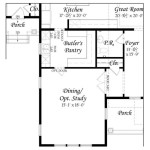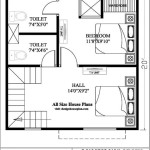How Can I Get a Floor Plan of My Home?
Obtaining a floor plan of a home can be valuable for various purposes, ranging from interior design projects and renovation planning to insurance claims and property valuation. Access to a precise and detailed floor plan allows homeowners and professionals to visualize space, understand dimensions, and communicate design ideas effectively. Fortunately, several avenues exist to acquire a floor plan, each with its own advantages and limitations. This article will explore the different methods and resources available to help individuals secure a floor plan of their residence.
The process of obtaining a floor plan may vary in complexity and cost depending on the age of the property, local regulations, and the availability of existing documentation. Older homes may present challenges if original plans are lost or never existed in the first place. Newer homes, on the other hand, are more likely to have plans readily accessible through builders or local government offices. Understanding these factors is crucial for setting realistic expectations and choosing the most appropriate approach.
Checking Existing Records and Resources
The first step in obtaining a floor plan should involve investigating readily available resources and records. This often proves to be the most cost-effective and quickest method if successful. Several potential sources exist, and it’s worthwhile exploring each one before resorting to more involved or expensive alternatives.
Builder or Developer: If the home is relatively new, contacting the builder or developer is an excellent starting point. Developers typically retain copies of the architectural plans for all properties they construct. These plans are often stored electronically and can be easily shared. Provide the builder with the property address and any relevant details, such as the construction year. Even if the original builder is no longer active, their successor or associated company may have access to the records.
Local Government Offices: Most municipalities require builders to submit architectural plans for approval before construction begins. These plans are typically stored in the local building department, planning department, or assessor's office. Accessing these records may involve visiting the office in person, submitting a formal request, or utilizing online portals if available. Be prepared to provide the property address and potentially a parcel number. Some jurisdictions may charge a fee for retrieving and copying the plans.
Previous Owners or Real Estate Agents: Reaching out to the previous owners of the property can also be a fruitful endeavor. They may have received a copy of the floor plan during the purchase process or may have commissioned one for their own renovations. Similarly, the real estate agent involved in the original sale might have access to the floor plan in their archives or marketing materials. Contacting these individuals can potentially save time and effort.
Mortgage or Appraisal Documents: In some cases, a simplified floor plan may be included in mortgage or appraisal documents. While these plans might lack the detailed measurements of architectural blueprints, they can still provide a basic understanding of the layout and room arrangement of the home. Review any existing mortgage documents or appraisal reports to see if a floor plan is included.
Title Company: The title company that handled the property transfer during the purchase may also hold relevant documents, albeit they don't typically include detailed floor plans. However, checking with them is still a good measure to ensure no stone is left unturned. They might have records indicating the existence of architectural plans or relevant permits.
Creating a Floor Plan Yourself
If existing records are unavailable or insufficient, the next option is to create a floor plan independently. This can be done using manual measurement techniques or with the aid of digital tools and software. While this method requires time and effort, it offers a high degree of control and customization.
Manual Measurement and Drafting: The traditional approach involves manually measuring the dimensions of each room using a measuring tape or laser distance measurer. Accurate measurements are crucial for creating a realistic floor plan. Sketch the outline of each room on paper, noting the dimensions of walls, doors, windows, and other architectural features. After measuring all rooms, transfer the sketches to a larger sheet of paper or drafting software to create a cohesive floor plan. This method requires attention to detail and a basic understanding of drafting principles.
Digital Floor Plan Software: Numerous software applications are available that simplify the process of creating floor plans digitally. These programs offer user-friendly interfaces, pre-designed architectural elements, and automatic dimensioning features. Popular options include AutoCAD, SketchUp, RoomSketcher, and Planner 5D. These tools allow users to create professional-looking floor plans with accurate measurements and realistic renderings. Some software also offers features for virtual staging and 3D visualization.
Mobile Apps: Several mobile apps are specifically designed for creating floor plans using the smartphone's camera and sensors. These apps often utilize augmented reality (AR) technology to measure distances and automatically generate a floor plan as the user walks through the space. While these apps offer convenience and ease of use, their accuracy may vary depending on the quality of the device's sensors and the environmental conditions. Examples of such apps include Magicplan, Floor Plan Creator, and ArchiSnapper.
Regardless of the method chosen, it's usually beneficial to create multiple drafts of the floor plan, refining the measurements and details with each iteration. Double-checking the dimensions and ensuring all architectural features are accurately represented is essential for producing a reliable and useful floor plan.
Hiring a Professional to Create a Floor Plan
For those who lack the time, skills, or tools to create a floor plan themselves, hiring a professional surveyor, architect, or interior designer is a viable option. While this method is generally more expensive than the previous two, it offers the highest level of accuracy and expertise.
Surveyors: Land surveyors are trained to accurately measure and map properties. They possess the equipment and knowledge necessary to create detailed site plans, including floor plans. Surveyors use specialized instruments, such as total stations and GPS devices, to obtain precise measurements. Hiring a surveyor is particularly useful for complex properties or when a highly accurate floor plan is required for legal or regulatory purposes. The cost of a surveyor's services will vary depending on the size and complexity of the property.
Architects: Architects are qualified to design buildings and create detailed architectural plans. They can generate floor plans that meet specific requirements, such as renovation plans or permit applications. Architects can also provide valuable insights into the structural integrity and design possibilities of the property. Engaging an architect is advisable for major renovations or when seeking professional design advice.
Interior Designers: Interior designers specialize in space planning and interior design. They can create floor plans that reflect the client's needs and preferences, taking into account factors such as furniture placement, traffic flow, and aesthetics. Interior designers often use specialized software to create detailed floor plans and 3D visualizations. Hiring an interior designer is beneficial for homeowners who need assistance with interior design projects or space planning.
When hiring a professional, it's important to obtain quotes from multiple providers and compare their qualifications, experience, and pricing. Request samples of their previous work to assess their quality and style. Clearly communicate the specific requirements of the floor plan, including the level of detail, accuracy, and purpose. A written contract outlining the scope of work, timeline, and payment terms is essential for avoiding misunderstandings and ensuring a satisfactory outcome.
Before commissioning any professional services, it's prudent to inquire about their liability insurance coverage. This safeguards against potential errors or omissions in the floor plan that could result in financial losses. Verifying their credentials and references can further instill confidence in their expertise.
In conclusion, securing a floor plan of a home involves exploring existing records, creating one independently through manual or digital methods, or engaging a professional. The optimal method hinges on the availability of existing documentation, the desired level of accuracy, and the resources available. Each approach offers a unique set of advantages and limitations, warranting thoughtful consideration before proceeding.

House Plans How To Design Your Home Plan

House Plans How To Design Your Home Plan

House Plans How To Design Your Home Plan

House Plans How To Design Your Home Plan

Floor Plans Learn How To Design And Plan

Floor Plans Types Symbols Examples

Floor Plans Types Symbols Examples

House Plans How To Design Your Home Plan

House Plans How To Design Your Home Plan

House Plans How To Design Your Home Plan
Related Posts








